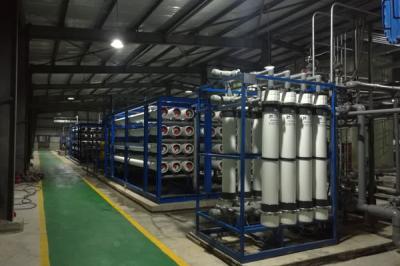Practical application
MBR can effectively improve sludge load, while MBBR belongs to biofilm process, both of which have good effect on organic pollutant treatment, including COD, BOD and ammonia nitrogen.|
Item |
MBBR |
MBR |
Common |
Difference |
|
Definition |
Moving bed biofilm reactor |
Membrane bio reactor |
No |
Biofilm & membrane |
|
Principle |
Biofilm process |
Activated sludge & membrane separation |
Rely on activated sludge to remove organic matter |
No |
|
Effluent quality |
In addition to TP and SS, it can meet the requirements of four types of water bodies |
In addition to TP , it can meet the requirements of four types of water bodies |
Rely on chemical process to remove phosphorus |
MMBR cannot remove SS alone |
|
Daily operation management |
Simple |
More difficult |
No |
MBBR packing does not need to be replaced, and the MBR membrane module needs to be replaced once every 5 years |
|
Cost |
The initial investment is large, and the later operation is small |
The initial investment is large, and the later operation islarge |
The initial investment is large |
The cost of MBR component replacement is high |
When deciding between MBR (Membrane Bioreactor) and MBBR (Moving Bed Biofilm Reactor) for a wastewater treatment system, there are several factors to consider. Both technologies have their advantages and disadvantages, so it's important to evaluate your specific requirements and conditions. Here are some key points to help you make a decision:
Treatment Efficiency:MBR systems generally offer higher treatment efficiency compared to MBBR systems. The membrane filtration in MBR prevents the passage of solid particles and microorganisms, resulting in a higher quality effluent. MBBR systems rely on biofilm growth on floating media for treatment, which may not provide the same level of filtration.
Footprint and Space Requirements:MBR systems typically require a smaller footprint compared to MBBR systems. The membranes used in MBR systems allow for higher biomass concentrations, reducing the reactor size. MBBR systems require larger tanks to accommodate the floating media and provide sufficient contact time for biological processes.
Operational and Maintenance Considerations:MBR systems require regular membrane cleaning and replacement, which can be a costly and time-consuming process. On the other hand, MBBR systems have lower maintenance requirements since they do not involve membranes. However, MBBR systems may require occasional replacement of the floating media.
Tolerance to Shock Loads:MBR systems are generally more sensitive to shock loads, such as sudden increases in organic or hydraulic loads. MBBR systems are more resilient and can handle fluctuations in wastewater characteristics more effectively due to the biofilm's ability to adapt and recover quickly.
Energy Consumption:MBBR systems typically require less energy compared to MBR systems because they do not involve membrane filtration. MBR systems require energy for maintaining the required pressure to overcome the membrane's resistance.
Capital and Operating Costs:MBR systems are generally more expensive to install and operate due to the costs associated with membrane technology. MBBR systems tend to have lower capital and operating costs, making them more cost-effective for certain applications.
Ultimately, the choice between MBR and MBBR depends on the specific requirements of your wastewater treatment project, such as effluent quality standards, available space, budget, and the ability to handle shock loads. It is recommended to consult with wastewater treatment experts or engineering consultants who can evaluate your needs and help you make an informed decision.




 +86-25-58849045
+86-25-58849045
 +86-25-58749295
+86-25-58749295
 jiuwu@jiuwu.com
jiuwu@jiuwu.com
 No. 9 Park Road, Pukou District, Nanjing City (Sanqiao Factory)
No. 9 Park Road, Pukou District, Nanjing City (Sanqiao Factory) Call us on:
Call us on:  Email Us:
Email Us:  No. 9 Park Road, Pukou District, Nanjing City (Sanqiao Factory)
No. 9 Park Road, Pukou District, Nanjing City (Sanqiao Factory)

 English
English 한국어
한국어 français
français русский
русский Español
Español

